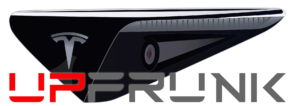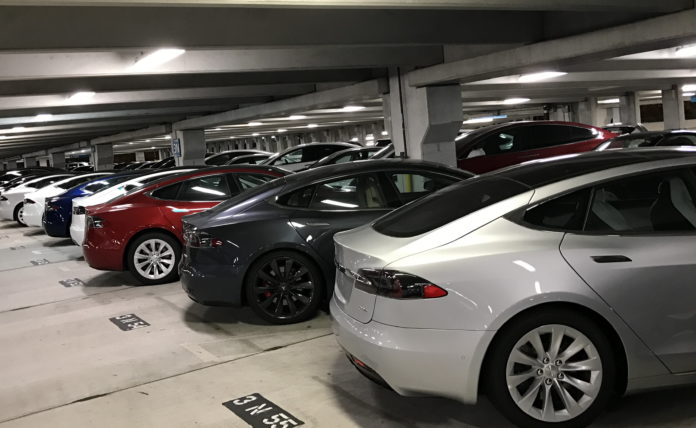We all get used to our daily charging routines. We drive to and from work, and plug in the Tesla to charge overnight. But what happens when we get out of that routine? What happens when we go on a trip?
Just like a phone, the Tesla uses some power even when not in use. Normally, this “phantom drain” isn’t an issue, but if you are going to park your car at an airport for an extended period of time without access to a plug, you’ll want to take some precautions to make sure you still have some battery power left when you return.
Of course, if you do have access to a plug, even a 110v plug, leave it plugged in. If you will be leaving the car for more than a few days, leave it plugged in and lower your charging limit to 50-60%. Some airport lots have charging valet services that will top up the battery for you.
If you are going to be surviving on battery power, the real key is to let your car sleep. When it has no reason to keep everything active, your car will go into a hibernation state which uses very little power. When the computer needs to do anything, it wakes up to a mode that uses much more power. Like your computers screensaver, it will stay active for around 15 minutes after the last activity, and then go back to sleep. To preserve your battery power, you want to get rid of anything that will take it out of that sleep state while you are away.
Arrive with as much battery as you can
It’s not healthy to leave the car sitting with a 100% charge, but you want to leave it up around 80-90%. If you are fairly close to the airport, charge at home just before you leave so that you arrive with plenty left. If you live farther away, find a place to top it up closer to the airport.
Turn off Sentry mode
Sentry mode is the biggest source of phantom drain. In order to detect activity around your car when parked, the full computer system and cameras need to be active, watching and interpreting the video feeds to detect threats. An airport parking lot is also quite active with random people walking by all day and night. Sentry can use up about 1-2 miles of your battery per hour, which really adds up on a long term trip. Turn it off.
Turn off Smart Summon Standby
Smart Summon Standby for ASS has a similar effect of keeping the system active and preventing it from going to sleep. It’s likely not something you will use in an airport parking lot anyway, so turn it off.
Disable Cabin Overheat Protection
Cabin Overheat Protection is there to prevent the internal temperature from getting too warm. It will turn on the fans and (optionally) even the air-conditioning to cool down the car. Obviously, the fans and A/C will use up battery, but even in a cool covered parking garage, there is also some circuitry that needs to remain active just to monitor the temperature.
Try to park in a covered lot or parking garage
If available, choose a parking garage or indoor parking. Even if Cabin Overheat protection is off, your car will jump in to prevent your battery from getting too hot or cold. Keeping it out of the hot sun or cold winds will help.
Turn off scheduled departure preconditioning
If you have Scheduled Departure set up for your regular morning commute, your car will precondition the battery and (optionally) turn on climate control for the cabin. Obviously, this is great while plugged in, but not ideal when you are away.
Stop checking on your car
Also on the topic of waking up your car for no reason, the Tesla app on your phone will wake up the car every time you open it. Remember that this will bring all of the cars systems online for about 15 minutes every time you open the app.
Update: The app no longer wakes up the car simply by opening it, but it will wake it up if you access any of the controls. It’s still a good idea to just avoid the app.
Disable third party apps
Third party apps like Teslafi, TeslaMate, Optiwatt or other apps on your phone have some great features for data or to remotely check on your car. This is a great treasure-trove of information, but it comes at the cost of waking up the computer. Most of these are intelligent enough to pause their polling to allow the car to sleep, but if you have several of these running, they can conflict with each other and keep the car awake. Even if you turn off scheduled departure, apps like Optiwatt or Stats will override those settings and use their own schedule. To be safe, turn these off for your trip.
Some of these items, like sentry and cabin overheat will automatically turn off if the battery gets below 20%, but if you keep checking the car with apps, the battery life will continue to drain.
Leaving these things running, you can lose 1-2% per hour, but the good news is that with these precautions, many Tesla owners have reported leaving their car for a month or more losing only 5-10% percent.
Or just leave it at home
If you are travelling for an extended period of time, you can save some stress, as well as the cost of expensive airport parking by just leaving the car at home. If you are parking it at home for an extended time, lower your charge limit to 50% and leave it plugged in to allow the Battery Management System to take care of things while you are away.



I’m glad you talked about airport parking and how to make sure your car will be safe! Recently, my uncle said he needs to travel for a business conference. My uncle wants to drive himself to the airport, so I’ll be sure to share your tips with him! Thanks for the advice on airport parking and why you should opt for an indoor parking lot space!
Thanks for these great tips! I’m am going on a 7 day cruise & was wondering if it was possible to leave my MYP in the garage. I feel much more comfortable now.
Thanks for the advice. Also cruising and leaving the Tesla in airport parking for over 2 weeks. These tips are priceless !!
Sarah, how much was the battery drain for two weeks?